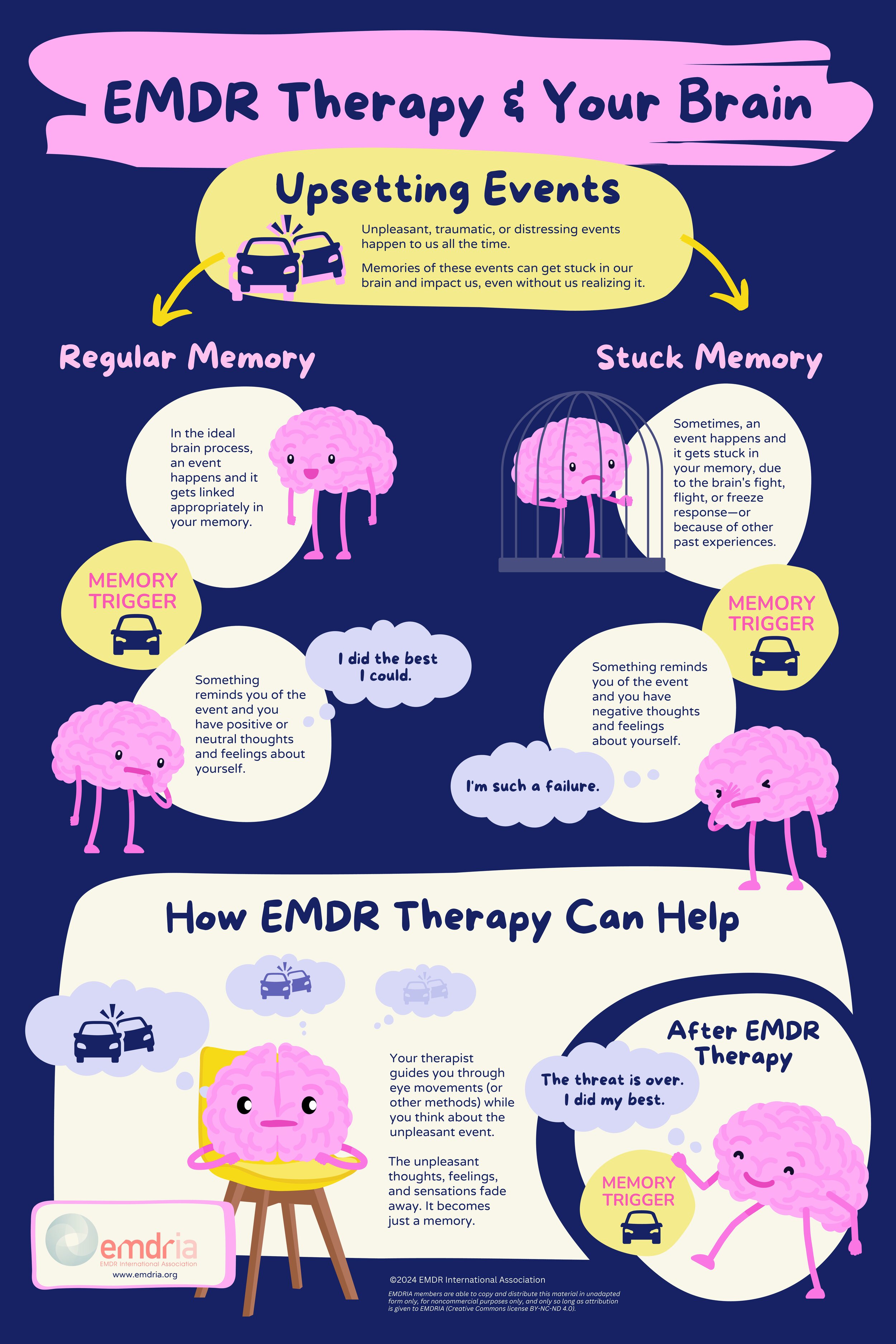
Melissa W Cooper
Licensed Marriage & Family Therapist
California # 141326
EMDR
Eye Movement Desensitization & Reprocessing
Unpleasant, traumatic, or distressing events happen to us all the time. Memories of these events can get stuck in our brain and impact us even without us realizing it. In the ideal brain process, an event happens and it gets linked appropriately in your memory. Something reminds you of the event and you have positive or neutral thoughts and feelings about your self. “I did the best I could”. Sometimes, an event happens and it gets stuck in your memory, due to the brains fight or freeze response or because of other past experiences. Something reminds you of the event and you have negative thoughts and feelings about yourself. “I’m such a failure.” EMDR is an evidence based practice that has been proven to help those unpleasant thoughts, feelings, and sensations fade away. They become just a memory.
What is EMDR?
Its 3-prong protocol is the framework that is used to address past, present, and future aspects of PTSD symptoms. A combination of guided eye movements, tapping, or auditory stimulation are used to facilitate reprocessing of memories, reducing their emotional charge. It is an effective evidence based approach that has been shown to help people recover from trauma without having to talk at length about the experience(s).
How Many Sessions Does It Take
EMDR reprocessing takes a number of sessions and can be done either in person or remotely via telehealth.
At the end of each session I will help you return to a calm place and talk to you about how to “close” down the work until your next session.
The number of sessions you might need with EMDR therapy depends on many factors such as the number of incidents of trauma, how long ago it occurred, and how much support was received after the trauma.
Working with me, you can expect to be met with warmth and empathy as you gain comfort sharing important aspects of your story. I will tailor your treatment to who you are and what you are seeking from the experience. As we build our working relationship, I will help you develop tools for coping with how you are feeling by helping you identify internal and external resources.
Step One
My First Priority with every client is to Co-create goals for therapy based on the clients needs and desires.
Step Two
Once goals have been set and you are ready, I will ask you important questions about the event, including your thoughts, feelings, body sensations, and images.
While thinking about the event, you will follow movement with your eyes (or alternatively hold tappers in your hands or listen to tones or do self-tapping on your upper arms alternating the left and right side (butterfly hugs).
While experiencing the bilateral stimulation movements you will simply notice what happens in your body, your thoughts, and your feelings without judgement or trying to change them and briefly report changes that occur.
EMDR therapy helps people reprocess traumatic events so that they are no longer stored in that raw, vivid, state specific form.
Step Three
If you want to go deeper then reprocessing stuck memories of traumatic events, we can explore the underlying reasons which could be existential, trauma-related, inherited in your DNA, or something else. Helpful tools include:
Depth (Jungian) Practices
Somatic Practices
Dream Work
Art
Mythology





